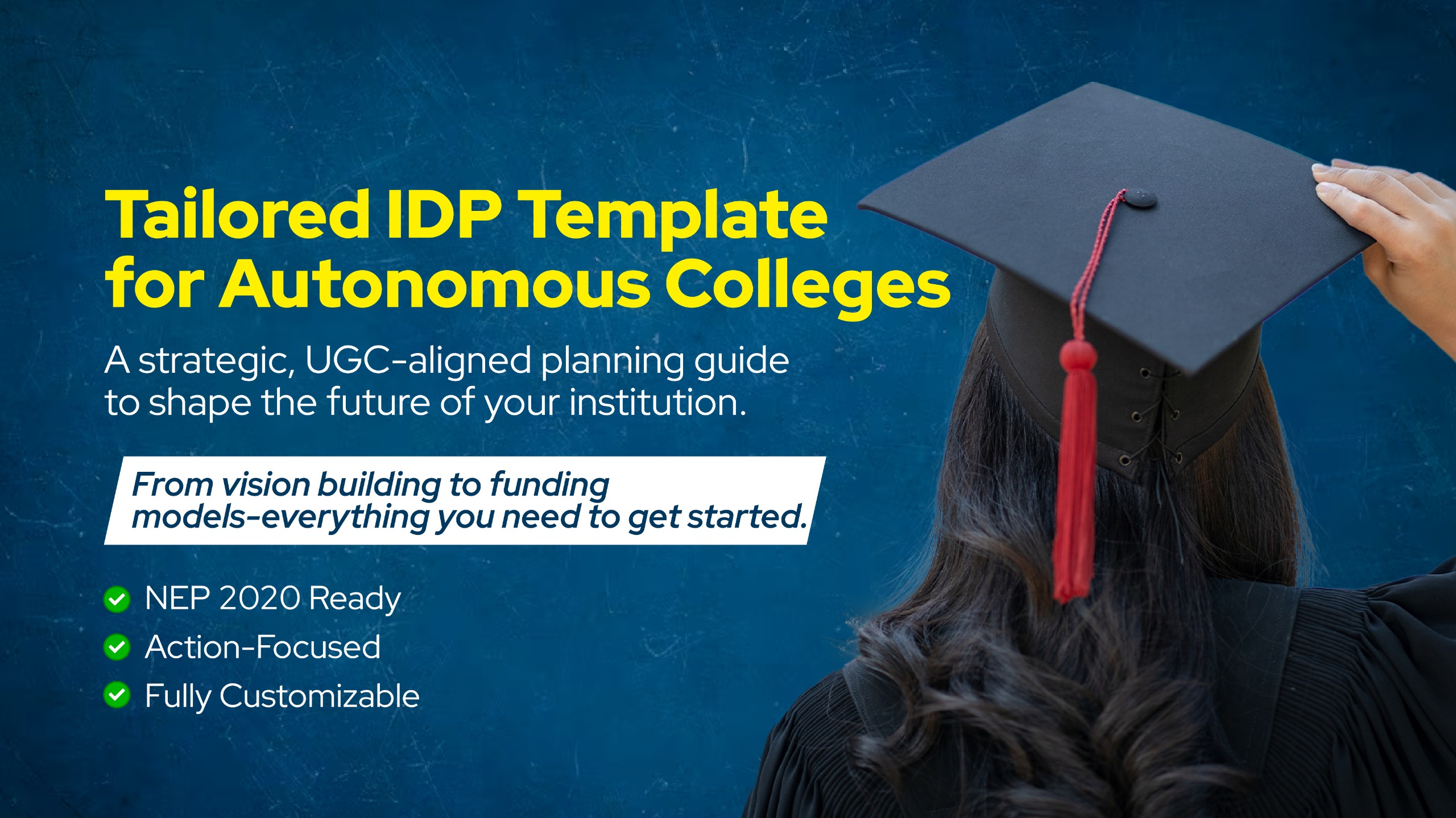
India’s higher education is transforming—and so must your institution. With the UGC pushing for future-ready reforms under NEP 2020, every Autonomous College needs a bold, strategic Institutional Development Plan (IDP).
This Tailored IDP Template is more than a checklist—it’s your guide to building academic agility, innovation, and resilience. From redefining your vision to driving digital change, use this as your launchpad to 2035.
It’s time to dream big—and plan smart.
| Category | Strengths (S) | Weaknesses (W) | Opportunities (O) | Threats (T) |
|---|---|---|---|---|
| Academic | Strong faculty in X discipline | Outdated curriculum in Y field | Collaboration with Industry Z | Competition from online platforms |
| Research | High-impact publications | Low patent filings | Govt. funding schemes (e.g., IMPRINT) | Brain drain to foreign universities |
| Infrastructure | Smart classrooms | Limited hostel capacity | Green campus grants | Rising maintenance costs |
| Governance | Transparent BoG | Slow decision-making | Autonomy status flexibility | Regulatory compliance burdens |
| Financial | Endowment funds | Over-reliance on tuition fees | CSR partnerships | Economic downturns |
Actionable Insights:
| Focus Area | Goal (2024–2033) | Actions | Responsible Team | Timeline | KPIs |
|---|---|---|---|---|---|
| Curriculum | 100% NEP-aligned programs | Revise 5 courses/year with industry input | Academic Council | 2024–2026 | 80% employability rate |
| Research | 50+ patents filed | Establish IPR cell + faculty incentives | Research Wing | 2024–2028 | 10 patents/year |
| Digital | Full ERP implementation | Partner with EdTech firms | IT Department | 2024–2025 | 100% paperless exams |
| Inclusivity | 30% female enrollment in STEM | Scholarships + mentorship programs | Admission Cell | 2024–2030 | Annual 5% increase |
| Revenue Stream | Current (%) | Target (2033) | Strategies |
|---|---|---|---|
| Tuition Fees | 60% | 40% | Reduce dependency via diversification |
| Industry Consultancy | 10% | 25% | MoUs with 10+ companies |
| Govt. Grants | 20% | 20% | Focus on NRF, IMPRINT-II |
| Alumni Endowments | 5% | 10% | Launch alumni engagement portal |
A well-crafted IDP is not just about planning—it’s about purpose.
Your journey to 2035 starts now.
Join us for FREE to get instant email updates!
Leave A Comment